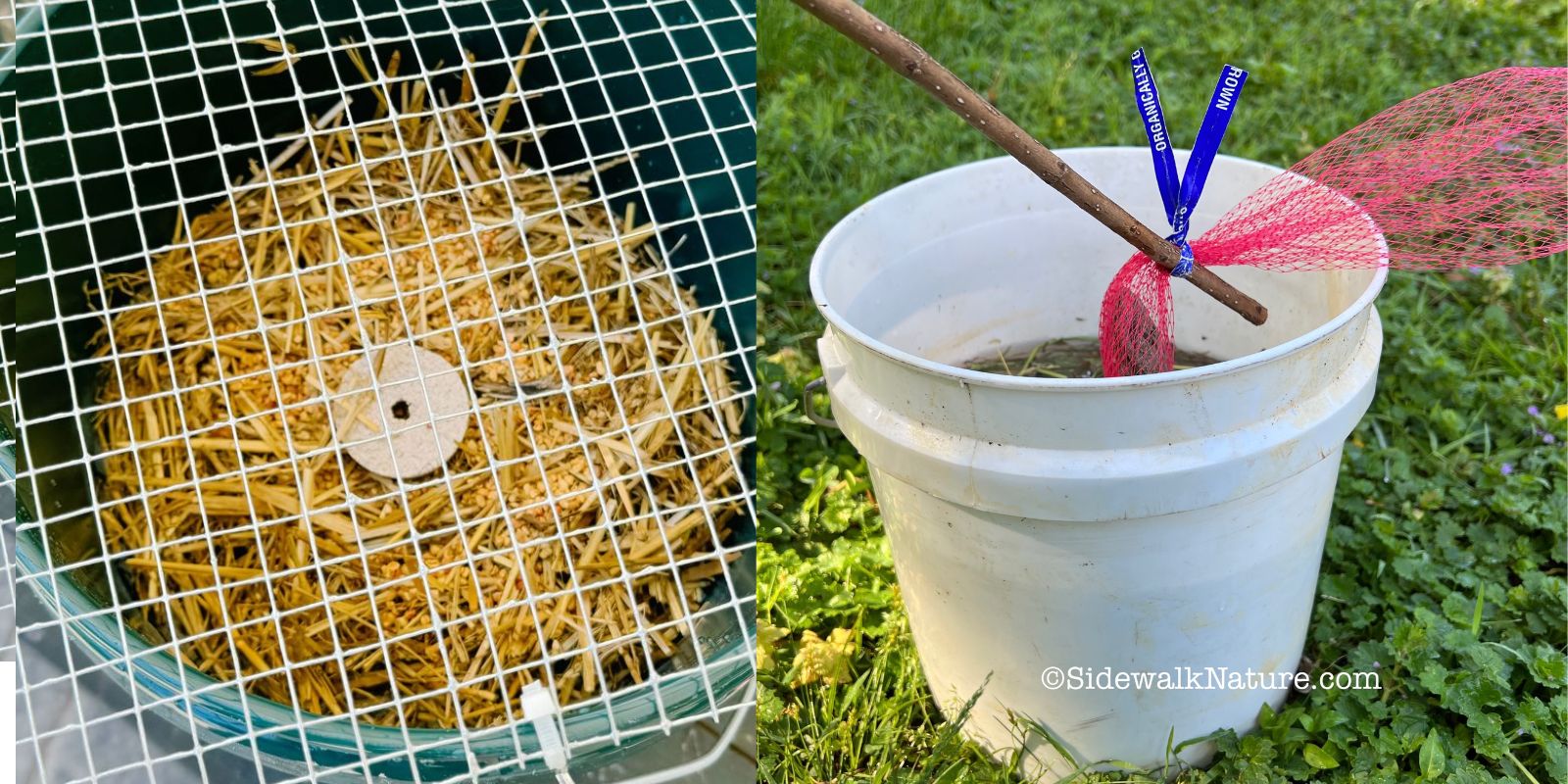Introduction
Mosquitoes are more than just an annoying summer pest—they can be carriers of serious diseases and significantly impact your outdoor enjoyment. The primary challenge in controlling mosquito populations is addressing their breeding grounds. One effective strategy is to target and eliminate mosquito larvae before they become adults. In this comprehensive guide, we’ll walk you through the “Buckets of Doom” method, a straightforward yet powerful approach to killing mosquito larvae and keeping your outdoor spaces pest-free.
Understanding the Mosquito Lifecycle
Before diving into the solution, it’s essential to understand the mosquito lifecycle. Mosquitoes undergo four stages: egg, larva, pupa, and adult. The larvae are aquatic and live in standing water. They feed on organic material and can develop into adult mosquitoes in as little as 7-10 days. Therefore, eliminating larvae in standing water is crucial for controlling mosquito populations.
Identifying Standing Water Sources
1. Locate Potential Breeding Grounds
The first step in the “Buckets of Doom” method is identifying areas where water collects. Common places include:
- Buckets: Often used for gardening, storage, or construction.
- Plant Saucer: Under pots that collect rainwater.
- Old Tires: Frequently used as planters or discarded.
- Birdbaths: Attractive to mosquitoes if water isn’t changed regularly.
- Gutters: Blocked gutters can retain water.
- Unused Pools or Tarps: Can trap rainwater and become breeding sites.
2. Inspect Regularly
Regular inspections are vital. Mosquitoes can lay eggs in as little as a teaspoon of water, so even small amounts should be checked. During the rainy season, water sources can quickly accumulate, making frequent inspections crucial.
Removing Debris and Cleaning Containers
1. Drain and Clean Containers
Once you’ve identified standing water, the next step is to clean it. Removing debris like leaves, twigs, and dirt is essential because these provide food for mosquito larvae.
- Drain: Pour out the standing water carefully, ensuring that all residue is removed.
- Scrub: Use a brush or sponge to scrub the sides of containers and remove any larvae or eggs attached to the surfaces. This step is crucial to ensure that no eggs or larvae remain.
2. Dispose of Unnecessary Containers
If you have containers that are no longer in use, consider disposing of them. If they’re essential, ensure they are cleaned and stored properly.
Adding Larvicides: The “Buckets of Doom” Method
1. Choose the Right Larvicide
Larvicides are designed to target mosquito larvae and prevent them from developing into adults. The most common and effective larvicides include:
- BTI (Bacillus thuringiensis israelensis): A bacterium that specifically targets mosquito larvae. It comes in various forms, such as tablets, granules, or powder. BTI is safe for humans, pets, and plants.
- Methoprene: An insect growth regulator that prevents larvae from maturing. It is also effective and safe when used as directed.
2. Application
- Tablets or Granules: Place the larvicide tablets or granules directly into the standing water. Follow the manufacturer’s instructions regarding the quantity based on the volume of water.
- Powder: If using powder, mix it according to the instructions and sprinkle it over the water surface.
3. Timing
Apply larvicides in the early stages of larval development. This prevents them from maturing into adults. Regularly reapply according to the product instructions, especially after heavy rain or if water levels change.
Covering and Managing Water Containers
1. Use Covers
Prevent mosquito access to standing water by using covers or lids on containers. This simple measure can significantly reduce the chances of mosquitoes laying eggs.
- Buckets: Use tight-fitting lids or covers.
- Plant Saucer: Consider using saucers with drainage holes or placing them in a shaded area to minimize water accumulation.
2. Regular Maintenance
- Empty Containers: If possible, empty and clean water containers weekly to disrupt the mosquito lifecycle. This includes birdbaths, plant saucers, and any other sources of standing water.
- Fix Leaks: Repair any leaks in gutters, water features, or other systems to prevent water accumulation.
Monitoring and Repeating the Process
1. Regular Checks
Consistent monitoring is key to maintaining a mosquito-free environment. After implementing the “Buckets of Doom” method, check your water sources weekly for new mosquito larvae.
2. Repeat Treatments
Repeat the larvicide application as needed. Reapply after heavy rain or if you notice new standing water. Consistency is crucial for long-term mosquito control.
Additional Tips for Mosquito Prevention
1. Landscaping
- Eliminate Standing Water: Regularly inspect and remove standing water from your garden and outdoor areas.
- Maintain Landscaping: Keep your lawn and garden well-maintained to prevent mosquito habitat.
2. Use Mosquito-Repellent Plants
- Lavender, marigolds, and basil: These plants not only enhance your garden but also help repel mosquitoes naturally.
3. Install Mosquito Traps
- Traps and Repellents: Consider using mosquito traps and repellents in addition to larvicides for a comprehensive approach.
Conclusion
The “Buckets of Doom” method offers a practical and effective solution for killing mosquito larvae and reducing the mosquito population in your outdoor space. By identifying and managing standing water, using appropriate larvicides, and maintaining regular inspections, you can significantly decrease mosquito breeding sites and enjoy a more pleasant and pest-free environment.
With consistent effort and these strategies, you’ll be well on your way to reclaiming your outdoor spaces from pesky mosquitoes. Implement these steps today and say goodbye to mosquito bites!

